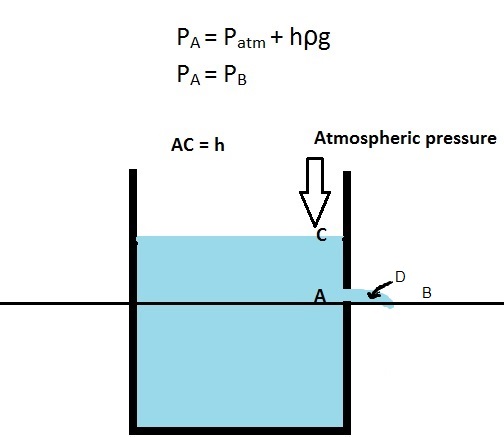My question is similar to this one : Should the liquid come out of the tank if a hole is drilled in the vertical wall? , but I still don't understand why the pressure within a free jet of liquid/fluid leaving an open vessel is equal to atmospheric pressure.
Let's take the same example as in the previous post.
Indeed, hydrostatic law says that pressure within the same fluid at the same height (horizontal level) doesn't change.
The argument, in the previous post, was that point $B$ is in the open air, another fluid, so $p_B$ (the pressure at point $B$) is equal to atmospheric pressure and hydrostatic law doesn't apply to that point. I'm ok with this explanation.
However, if we check the pressure $p_D$ inside of the liquid, at point $D$, we should have the same pressure as $p_A$, at point $A$. The previous argument doesn't hold : we are in the same fluid and we are at the same height. So why is $p_D$ (roughly) equal to atmospheric pressure ?

